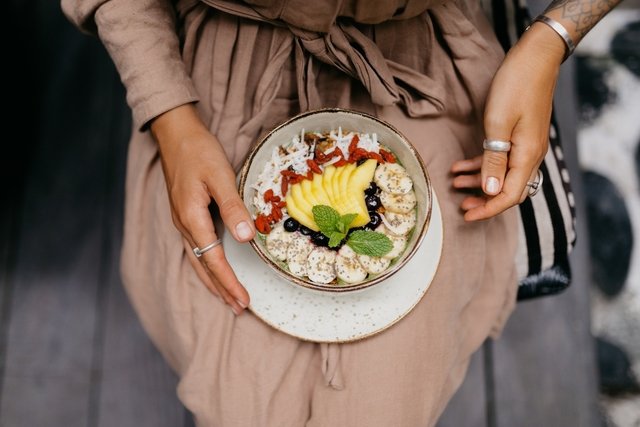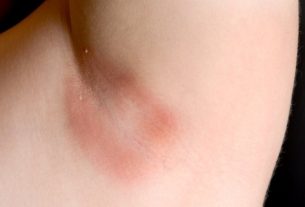The pre-diabetes diet consists of consuming foods rich in fiber, such as fruits with peel and pomace, vegetables, whole grains and legumes. In addition, lean proteins and healthy fats, such as olive oil, avocado oil and nuts, should be included in your diet.
These foods have a low to medium glycemic index, helping to reduce the rate of sugar absorption into the blood and thus preventing the onset of diabetes mellitus. It is important to remember that healthy eating must also be complemented with regular physical activity.
To find out your risk of having pre-diabetes, select your data from the following test:
When a diagnosis of pre-diabetes is made by a doctor, it is also important to consult a nutritionist to assess nutritional needs and create an individualized meal plan.
Allowed foods
Foods that can be consumed during prediabetes are:
- Low-fat meats, such as chicken, turkey and fish, as well as low-fat red meat. It is also possible to consume eggs and vegetable proteins, such as tofu and soy meat, for example;
- Greens and vegetablessuch as raw carrots, sweet potatoes, pumpkin, spinach, lettuce, chard, mushrooms, zucchini, eggplants, cucumbers and peas;
- Fruitssuch as strawberries, blackberries, orange, avocado, pear, papaya, peach, kiwi, apple, tomato and guava;
- Legumessuch as beans, soybeans, chickpeas, peas, lentils and broad beans;
- Whole grainssuch as brown rice, whole wheat pasta, wild rice, quinoa, corn and rolled oats;
- Oilseeds and seedssuch as walnuts, almonds, peanuts, cashew and Pará nuts, and pistachios, as well as linseed, pumpkin, sunflower, sesame and chia seeds;
- Skimmed milk and derivatives and vegetable drinksas well as low-fat cheeses, unsweetened natural yogurts, skimmed milk and oat, soy or almond milk, for example;
- Good fatssuch as olive, linseed and coconut oil, as well as peanut or almond paste.
It is important to take into account that people with prediabetes can consume all types of food, but they should give priority to consuming natural and fresh foods, with little flour and no sugar, as frequent consumption of foods rich in simple carbohydrates can cause an increase in blood sugar.
Furthermore, it is also recommended to drink around 2 liters of water per day, as water avoids the risk of dehydration and helps control blood glucose levels. Find out the recommended amount of water per day for each person.
Foods that should be avoided
Foods that should be avoided in the prediabetes diet are:
- Foods rich in sugar, such as white bread, biscuits, cakes, chocolates, sweets, fruit jelly, ice cream and syrups;
- Drinks, such as soft drinks, processed juices, energy drinks, coffees or teas with sugar;
- Fruit, such as cantaloupe melon;
- Carbohydrates with a high glycemic index, such as white rice, potatoes, mashed potatoes, pasta, rice crackers, cornstarch and tapioca;
- Foods rich in fat, such as sausages, sauces, yellow cheeses, whole milk and fried foods;
- Processed foods, such as pizza, hamburgers, hot dogs and ready-to-eat foods.
Alcoholic drinks, such as beer, wine and sparkling wine, should also be avoided, because alcohol increases the risk of hypoglycemia, a situation where blood glucose levels are very low, causing symptoms such as dizziness, nausea, mental confusion, palpitations and until I faint. Understand more about the symptoms of hypoglycemia.
How to put together a menu
To create a menu for pre-diabetes, you should always try to consume foods that are sources of carbohydrates along with foods rich in proteins and/or healthy fats, as shown below:
Breakfast and snacks
For breakfast, it is recommended to choose to eat foods prepared with whole grains, such as oat pancakes or wholemeal bread. These carbohydrates should be consumed together with eggs, white cheeses, shredded chicken or ground beef, for example. This combination helps to slow down the absorption of sugar from food, preventing blood sugar spikes.
Small snacks can be made by combining 1 portion of fruit with low-fat natural yogurt, or with oilseeds, such as chestnuts, peanuts and almonds, for example. Another option is to use the fruit with 2 or 3 squares of 70% chocolate.
Lunch and dinner
Lunch and dinner should be rich in raw vegetables or vegetables sautéed in olive oil, which is rich in good fats. In addition, you must choose a carbohydrate source, such as brown rice, whole wheat pasta or quinoa, for example. If you want to consume 2 types of carbohydrates, you should place small portions of each on your plate, such as 1/2 cup of brown rice and 1/2 cup of beans.
In addition, you should also consume a portion of lean protein, such as chicken, fish, tofu and eggs, at lunch and dinner. After the meal, you should prefer to consume fresh, whole fruit as a dessert.
In general, food should be prepared roasted, grilled, boiled or steamed, and it is recommended to avoid frying. Furthermore, it is recommended to use spices or natural herbs to season food, such as oregano, rosemary, turmeric, saffron, cinnamon, coriander, parsley, garlic and onion, for example.
Sample menu for prediabetes
The following table shows an example of a 3-day menu for pre-diabetes:
This menu is just an example to be included, where the types and quantities of food indicated vary according to age, sex, physical activity and current health status. Therefore, it is advisable to consult a nutritionist so that a complete assessment can be carried out and a diet can be created according to individual needs.

Sign up for our newsletter and stay up to date with exclusive news
that can transform your routine!
Warning: Undefined array key "title" in /home/storelat/public_html/wp-content/plugins/link-whisper-premium/templates/frontend/related-posts.php on line 12
Warning: Undefined array key "title_tag" in /home/storelat/public_html/wp-content/plugins/link-whisper-premium/templates/frontend/related-posts.php on line 13




